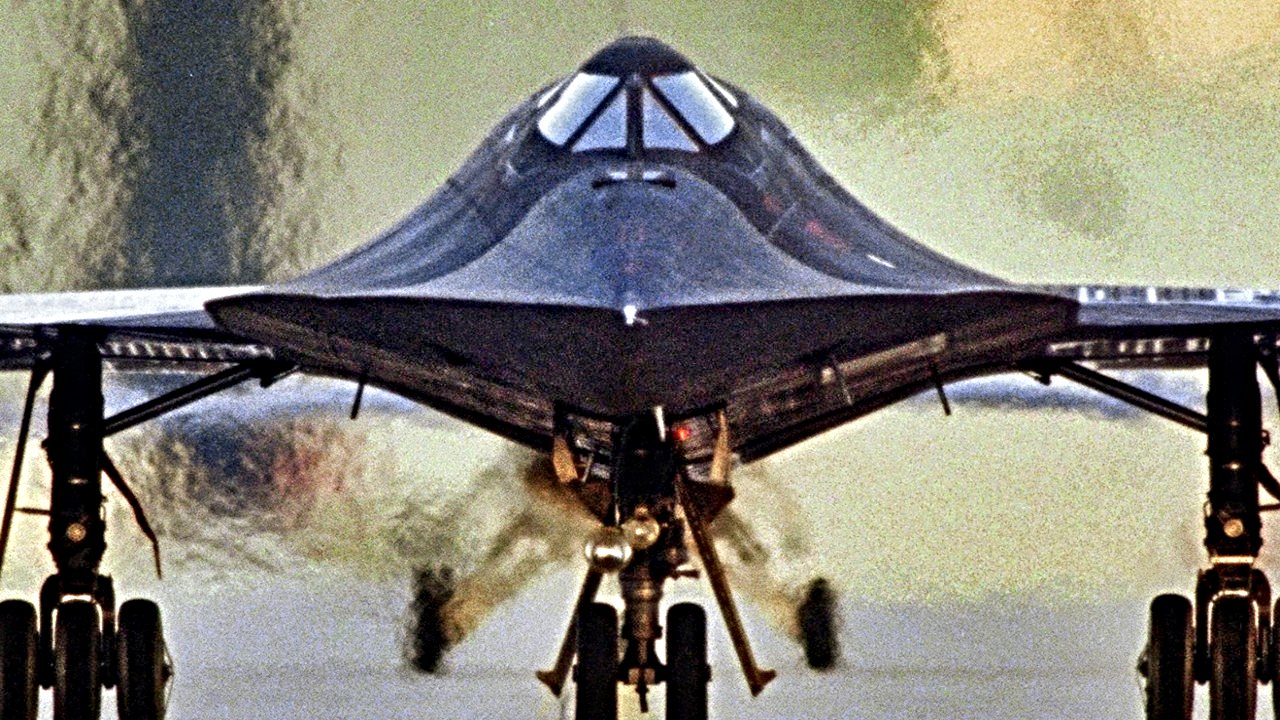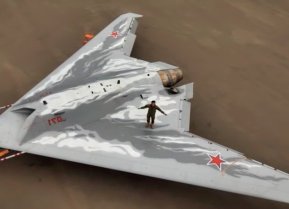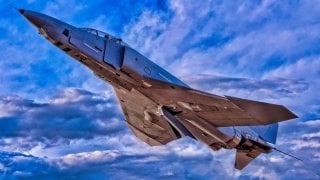Why An F-4 Phantom Tried To 'Catch' An SR-71 Blackbird Spy Plane
Though not as fast as the SR-71, the F-4 had been a renowned record-holder in her own right, setting a whopping 16 world speed and altitude records.
KEYPOINT: Though not as fast as the SR-71, the F-4 had been a renowned record-holder in her own right, setting a whopping 16 world speed and altitude records.

Blackbird Blackout — The Time an F-4 Phantom Tried to Intercept an SR-71:
Yours Truly has to admit to having a sentimental soft spot in his heart for the SR-71 Blackbird spy plane.
The plane is a legend for countless reasons.
Not so long ago, Dario Leone of Aviation Geek Club penned an article with the rather voluminous title of “US Navy F-4 pilot recalls when his Phantom II radar screen went black because of the high speed of an SR-71 Blackbird he and his RIO tried to intercept while it was exiting Chinese airspace.” (My profuse thanks to my old USAF Security Forces Academy classmate “Suzy” for bringing the story to my attention.)
Since I’ve also written my fair share of articles on the F-4 Phantom II, that headline intrigued me, hence this article you’re reading now.
SR-71 Blackbird Brief History & Specifications
What can I say about the Blackbird that hasn’t already been written?
Arguably the ultimate testament to the genius of Clarence “Kelly” Johnson (1910-1990) and his legendary “Skunk Works” program at Lockheed (now known as Lockheed Martin of course).
She made her maiden flight in December 1964, introduced into official operational service in January 1966, and retired by the U.S. Air Force and NASA in 1998 and 1999 respectively.
She still hasn’t relinquished that status as the world speed record holder even after 25 years of retired status.
Just how fast?
Test pilot Jim Eastham (1924-2016) managed to push one to Mach 3.56 (or just under 2,731.478 mph) for approximately 15 seconds whilst in a dive, as noted by MSgt Jim Goodall (USAF, Ret.) in his 2018 book “Lockheed SR-71 Blackbird: The Illustrated History of America’s Legendary Mach 3 Spy Plane.”
F-4 Phantom Brief History and Specifications
Just like with the Blackbird, the Phantom II is a warbird that needs little to no introduction to aviation history buffs.
Though obviously not as fast as the SR-71, the F-4 had been a renowned record-holder in her own right, setting a whopping 16 world speed and altitude records between 1959 and 1962; top speed was Mach 2.23 (1,711 mph). These speed records were attained in spite of the Phantom’s large size: a max takeoff weight of 60,000 poiunds, a fuselage length of 63 feet, a wingspan of 37 feet 5 inches, and a height of 16 feet 5 inches. This impressive combination of size and speed inspired Phantom driver Dick Anderegg to joke that this big bird provided “proof that if you put enough thrust behind a brick you can make it fly.”
Making her maiden flight in 1958, the F-4 became America’s mainstay fighter-bomber of the U.S. during the Vietnam War, flown by, among other famous aerial warriors. USAF Col. (eventual retired Brig. Gen.) Robin Olds during his MiG-killing Operation Bolo in 1967, Randall “Duke” Cunningham (CDR, USN, Ret.) – the USN’s only air ace in Vietnam – and the “fighter pilot’s minstrel” Dick Jonas (Lt. Col, USAF. Ret.). The plane had her last combat hurrah during Operation Desert Storm in 1991, performing Wild Weasel duties. i.e. suppression of enemy air defenses (SEAD) against Saddam Hussein’s Iraqi surface-to-air missile (SAM) radars, before being retired in 1996. (Yes, I know, the Iranian Air Force still has Phantoms in service, but that’s a whole ‘nother story in and of itself.)
Blackbird vs. Phantom
Okay, those preambles aside, onto our story.
On an unspecified date during the Vietnam War, USN Phantom pilot (or “Naval Aviator,” to use the preferred USN jargon) Jerry Hart and his Radar Intercept Officer were flying on a BARCAP (Barrier Combat Air Patrol) mission in the northern Gulf of Tonkin, when they received a heads-up call from “Red Crown” (callsign for a guided missile cruiser backing up the BARCAP in support of the aircraft carriers) advising of a friendly who would be coming at the BARCAP from the north.

Hart realized that meant an SR-71 would be exiting Chinese airspace from over Hainan Island coming right over the F-4 crew. Jerry turned his aircraft toward the north in the hope of picking up the Blackbird on radar and possibly even getting a naked eye visual sighting, and, in his own words:
“After running the antenna up in elevation as far as it would go my RIO was able to paint a target and quickly locked it up…I watched in amazement as the Vc circle [on the radar display] which told us the relative closing velocity of the target started rapidly winding up far higher than I had ever seen it before. Then the B trace, which indicated the target’s position relative to the nose of our aircraft, began to dither back and forth rapidly before slamming to the side of the scope and the screen went completely black. We never could get it to work again.”
Hart concluded his interview with Leone by stating that “‘We thought we could at least see it fly overhead as it passed us. Nope. Too high, even for us to see with the naked eye. I had once seen another aircraft at 56 nautical miles verified by radar so I knew my eyes weren’t the problem.”
In the (mostly) good-natured annals of interservice rivalries, the “Zoomies” (Air Force) got the last laugh on the “Squids” (Navy) in this instance.
About the Author
Christian D. Orr is a former U.S. Air Force Security Forces officer, Federal law enforcement officer, and private military contractor (with assignments worked in Iraq, the United Arab Emirates, Kosovo, Japan, Germany, and the Pentagon). Chris holds a B.A. in International Relations from the University of Southern California (USC) and an M.A. in Intelligence Studies (concentration in Terrorism Studies) from American Military University (AMU). He has also been published in The Daily Torch and The Journal of Intelligence and Cyber Security. Last but not least, he is a Companion of the Order of the Naval Order of the United States (NOUS).


